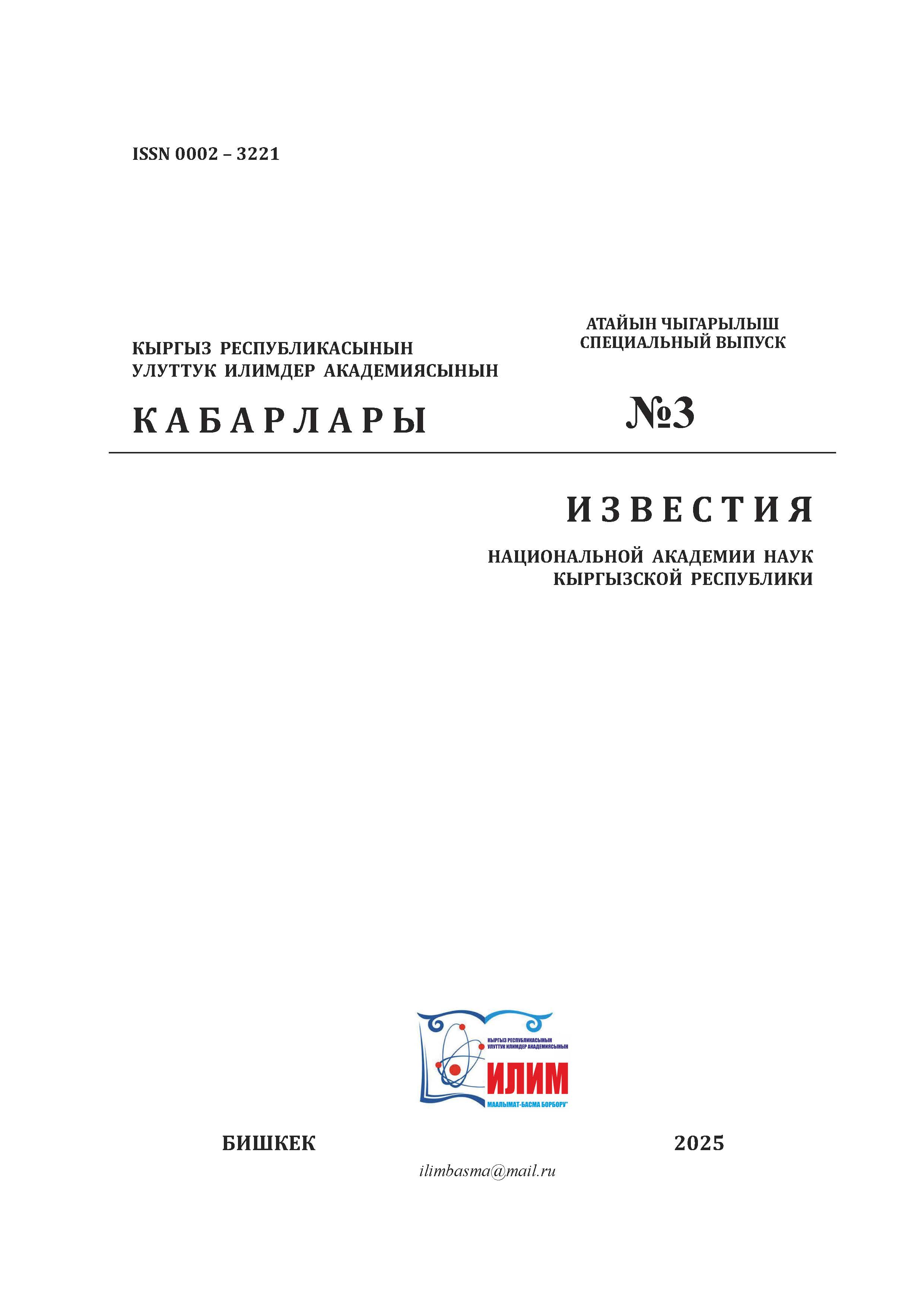GLOBAL AND LOCAL DEMOGRAPHIC CHALLENGES: A COMPARATIVE STUDY OF POPULATION DYNAMICS IN KYRGYZSTAN AND WORLDWIDE
Keywords:
Kyrgyzstan; demographic trends; birth rate decline; urban population; migration; public policy; regional development; sustainable development; demographic strategy.Abstract
This study examines global and local demographic trends with a focus on the Kyrgyz Republic. Against the backdrop of declining birth rates, population aging, and rapid urbanization worldwide, Kyrgyzstan demonstrates a unique trajectory—population growth driven by internal migration coupled with a sharp decline in urban birth rates. A comparative analysis of demographic data from 2019 to 2023 reveals significant regional imbalances and institutional gaps in the country’s population policy. Since 2005, the absence of a specialized governmental body for demographic forecasting has weakened the state’s capacity to address current and future demographic challenges. Drawing on international experience, the paper proposes strategic recommendations, including the development of a national demographic strategy, enhanced support for young families, and investment in regional infrastructure. The findings are relevant for policymakers, researchers, and experts working in the fields of sustainable development, migration, and social policy.
References
United Nations Department of Economic and Social Affairs (UN DESA). World Population Prospects 2022. New York: UN; 2023.
World Bank. Demographic Trends and Policy Responses. Washington DC: World Bank; 2022.
Lee R, Mason A. Population Aging and the Generational Economy. Cheltenham: Edward Elgar; 2017.
Bloom D, Canning D. The Demographic Dividend: A New Perspective on the Economic Consequences of Population Change. Santa Monica: RAND Corporation; 2003.
Harper S. How Population Change Will Transform Our World. Oxford: Oxford University Press; 2016.
Castles S, Miller M. The Age of Migration: International Population Movements in the Modern World. Basingstoke: Palgrave Macmillan; 2009.
Dyson T. Population and Development: The Demographic Transition. London: Zed Books; 2010.
Reher DS. The demographic transition revisited as a global process. Population, Space and Place. 2004;10(1):19–41.
UN-Habitat. World Cities Report 2020: The Value of Sustainable Urbanization. Nairobi: UN-Habitat; 2020.
United Nations Population Fund (UNFPA). State of World Population Report. New York: UNFPA; 2021.
OECD. Ageing and Employment Policies. Paris: OECD Publishing; 2021.
Eurostat. Population Structure and Ageing. Luxembourg: Eurostat; 2023.
International Organization for Migration (IOM). World Migration Report. Geneva: IOM; 2020.
World Health Organization (WHO). Global Health Observatory: Demographic Indicators. Geneva: WHO; 2022.
International Labour Organization (ILO). Labour Market Impacts of Demographic Changes. Geneva: ILO; 2021.
Национальный статистический комитет Кыргызской Республики. Демографический ежегодник Кыргызской Республики. Бишкек: Нацстатком; 2023.
Национальный совет по устойчивому развитию КР. Национальный обзор по достижению Целей устойчивого развития. Бишкек; 2022.18. Сатаров ТА. Демографическая ситуация в Кыргызстане: вызовы и перспективы. Вестник КНУ. 2021;(2):65–71.
Абдраимов А, Исаева Г. Миграция и ее влияние на демографическую структуру Кыргызстана. Общество и экономика. 2020;(3):102–108.
Карабаев К. Урбанизация и изменение рождаемости в Кыргызской Республике. Региональные исследования. 2019;(1):44–51.
Усенова А. Социальная структура населения Кыргызстана в условиях миграции. Бишкек; 2018.
Международная организация по миграции. Миграционные тенденции в Центральной Азии. Бишкек: МОМ; 2021.
Программа развития ООН в КР. Человеческое развитие в условиях демографических изменений. Бишкек: ПРООН; 2022.
Министерство здравоохранения КР. Отчет по доступу к медицинским услугам населения. Бишкек; 2021.
Акаев А, Бабаев К. Социально-экономические последствия демографического перехода в Кыргызстане. Экономика и управление. 2017;(4):17–22.
Правительство КР. Стратегия устойчивого развития Кыргызской Республики до 2040 года. Бишкек; 2018.
UNFPA Кыргызстан. Репродуктивное здоровье и демография в Кыргызстане. Бишкек: UNFPA; 2020.
Исаев Э. Тенденции этнического состава и демографических изменений в Кыргызстане. Регион и общество. 2021;(1):55–60.
Нацстатком КР. Городское население и инфраструктура: статистический сборник. Бишкек; 2022.
Орозонова АА. Институциональные подходы к устойчивому развитию в условиях демографических изменений. Экономика и управление. 2022;(2):39–45.

